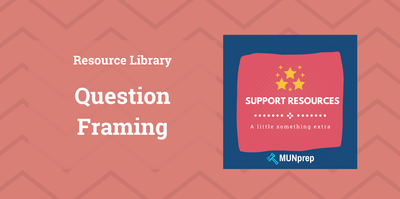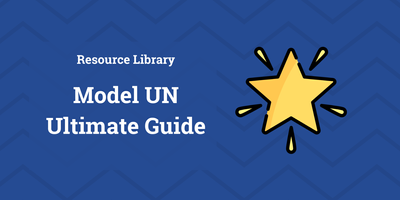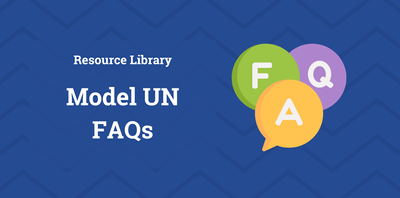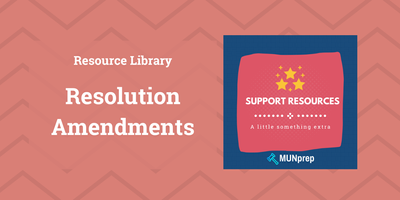Speech Openers for Model UN

Your opening words are more than just the start of your speech—they’re your chance to make a lasting impression. A strong introduction captures attention, sets the tone, and establishes your authority as a speaker.
Whether you choose to pose a thought-provoking question, share a surprising statistic, or use vivid imagery, the right opening can transform passive listeners into engaged participants. Let’s explore how to craft an opening that not only captivates but also lays the foundation for a powerful message.
Why Your Speech Opening Matters
- First Impressions: Audiences form judgments quickly. A strong opening signals confidence, competence, and clarity of purpose.
- Attention-Grabbing: In a world full of distractions, engaging your audience from the first words is crucial.
- Setting the Tone: Your opening can establish mood—serious, humorous, empathetic, etc.—and guide how people listen and interpret your speech.
Different Types of Openers
1- Asking a Provocative Question
- Create Curiosity: People instinctively try to answer or ponder a question they hear.
- Encourage Engagement: The audience becomes active participants rather than passive listeners.
- Set the Stage: A well-chosen question can outline the central problem you plan to solve or the theme you will explore.
How to Use Provocative Questions
- Make It Specific: Vague questions lose impact. Tailor the question to your subject.
- Use Follow-Up: Return to the question later in your speech for a sense of closure.
Example
“Have you ever wondered why some ideas stick with us while others vanish in seconds?”
2- Shocking or Surprising Statistics
- Immediate Interest: Surprising data can captivate attention.
- Credibility: Showing you have done your research projects authority and confidence.
- Framing the Topic: Statistics can highlight a problem or emphasize the size and scope of an issue.
Example
“Did you know that 20% of all food produced globally goes to waste? That’s like throwing away one out of every five meals—imagine the difference we could make if we changed that.”
Learn more about statistics in Model UN here!
3- Quoting an Expert or a Famous Figure
- Boost Credibility: Associating your speech with renowned thinkers, historical leaders, or respected experts can lend authority to your message.
- Clarify Your Theme: The right quote can encapsulate the essence of your speech.
- Universal Appeal: Many quotes have stood the test of time because they resonate with broad audiences.
Tips for Using Quotes
- Match Your Tone: Pick quotes that complement the tone—humorous, motivational, or serious—of your speech.
- Keep It Short: Long quotes can be difficult to follow.
- Explain Its Relevance: Briefly connect the quote to your topic, so it doesn’t feel random.
Example
“As Winston Churchill once said, ‘Success is not final, failure is not fatal: it is the courage to continue that counts.’ Today, I want to explore how resilience shapes our lives and our work.”
Learn more about quotes here
4- Using a Metaphor or Imagery
- Evocative Visuals: Metaphors spark the imagination and create mental images.
- Intuitive Understanding: The audience often grasps abstract concepts more easily through metaphorical language.
- Memorable Impact: Powerful imagery can stick in the audience’s minds long after the speech.
Tips for Using Metaphors
- Choose Universally Understood Images: Pick imagery your audience can relate to.
- Keep It Simple: An overly complex or obscure metaphor can confuse rather than clarify.
- Relate It Back: Tie the metaphor to your speech’s main points to reinforce your message.
Example
"Imagine a sprawling tapestry, woven with threads from every nation. Each thread brings its own color, its own texture, its own story. When one thread frays or is cut, the entire tapestry is weakened. Today, we’ll discuss how international cooperation can ensure every thread remains strong, preserving the beauty and strength of our shared world."
5- Using Humor or a Joke
- Positive Vibes: Humor can lighten the mood and make you more likeable.
- Eases Tension: If the topic is heavy, a little levity can help the audience relax and be more receptive.
- Boosts Engagement: Laughter is a social activity—it can unite your listeners.
Tips for Using Humor
- Know Your Audience: Tailor your humor to the group’s cultural background and expectations.
- Stay Relevant: The joke should relate to the subject or at least logically transition to it.
- Avoid Offensiveness: Steer clear of jokes that can alienate or offend members of the audience.
Example Opening
"They say diplomacy is the art of letting someone else have your way. If that’s true, I’ll be trying very hard today to convince you that my country’s proposals are actually your ideas all along!"
6- Painting a Scenario or Hypothetical Situation
- Immersion: Invites the audience into an imagined scenario that sets up your speech’s main challenge or opportunity.
- Concretizes Abstract Ideas: Complex issues become more tangible through hypothetical examples.
- Engages Emotion: People empathize more readily with real or imagined scenarios than with abstract arguments.
Tips for Using Scenarios
- Use Vivid Details: Appeal to the five senses if possible.
- Keep It Focused: Don’t overwhelm the audience with unnecessary details.
- Weave It into Your Argument: Return to the scenario as you develop your thesis or conclusion.
Example
“Imagine it’s the year 2050. You wake up and look out your window to find self-driving cars shuttling people to solar-powered workplaces. Today, I’ll discuss the tech innovation needed to make that vision a reality.”
Putting It All Together
- Choose Your Opening Strategy: Select from anecdotes, questions, statistics, quotes, etc., based on what resonates with your audience and subject matter.
- Be Authentic: Whichever technique you choose, your genuineness and passion shine through most powerfully.
- Practice the Delivery: Record yourself or rehearse with a peer. Focus on pacing, clarity, and eye contact.
- Mind the Transition: The best openings smoothly lead into the core content. Write and practice a strong linking sentence or paragraph to ensure the flow.
Conclusion
A great speech opening grabs attention and sets a confident, engaging tone. By incorporating personal stories, striking statistics, relevant quotes, or a dynamic demonstration, you can pave the way for a memorable and impactful presentation. Always tailor your approach to your audience, keep it authentic, and make sure every element—from humor to quotes—supports your overarching message.
With these strategies and carefully chosen quotes, you’ll be well on your way to delivering openings that captivate your audience from the very first words.






